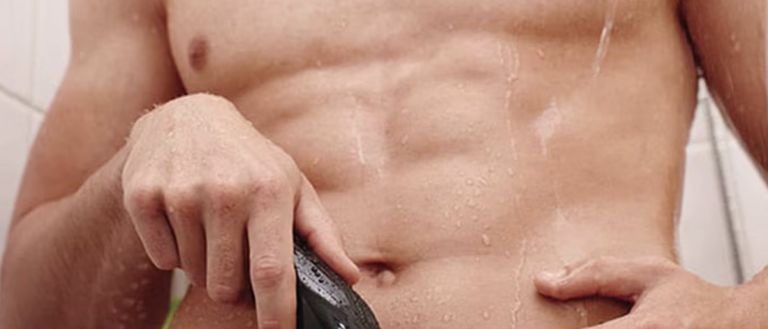
The majority of American men — 50.5% — groom their pubic hair.
New York, N.Y. — In recent years, male pubic hair grooming has become a topic of growing interest in the United States, reflecting shifts in personal hygiene, aesthetics, and cultural norms.
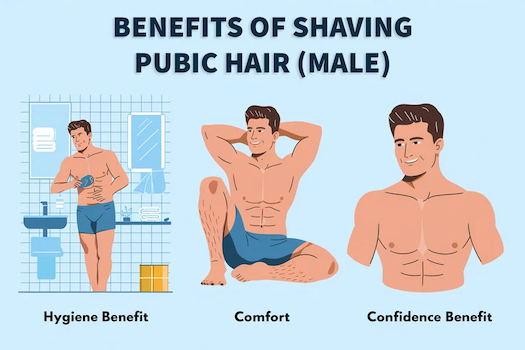
A 2017 study published in the American Journal of Men’s Health found that approximately 50.5% of U.S. men aged 18 to 65 engage in regular pubic hair grooming, defined as trimming, shaving or waxing within the past three months.
Of these, trimming is more common than shaving, with about 47% of groomers opting to trim and roughly 35% reporting they have removed all pubic hair at least once. Waxing, either at home or in a salon, is often used for full removal.
The distinction between trimming and shaving is notable, as trimming involves shortening hair with scissors or electric clippers, while shaving typically uses razors for a closer cut or complete removal.
Wiki-how Offers Manscaping Advice
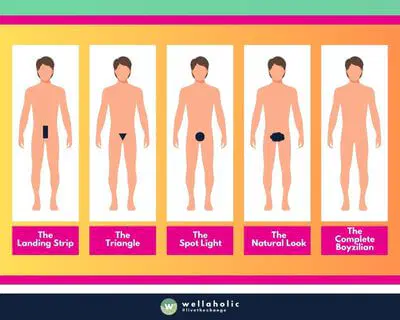
Wiki-how provides instructions on “How to Remove Male Pubic Hair Safely Without Shaving.” This advice, co-authored by Adarsh Vijay Mudgil, M.D. and Aly Rusciano, covers the whole host of options related to this topic:
Often Wiki-how is a barometer of American cultural trends.
Depilatory Creams include common brands such as Nair Shower Cream and Veet In-Shower Hair Removal Cream. The best way to remove hair from male private parts is to first try using a depilatory cream.
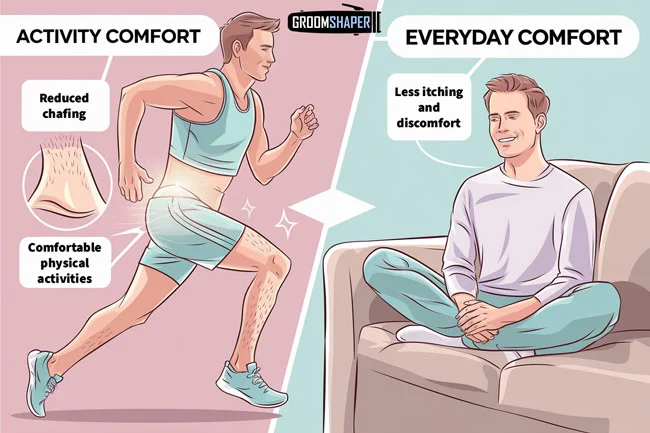
Depilatory creams designed for the pubic area are gentler on the skin and can prevent hair from growing for up to 2 weeks. Simply follow the instructions on the product.
Male and female pubic hair is chemically identical (keratin-based), with no inherent structural difference requiring distinct depilatory formulations, per WebMD.
However, male pubic hair is often coarser or denser, leading to products like Nad’s for Men Down Under, which use thioglycolic acid and aloe vera for sensitive areas.
Female-targeted creams (e.g., Veet Sensitive or Nair Bikini Cream) prioritize hydration with ingredients like shea butter or coconut oil to reduce irritation on thinner skin areas, as noted in product descriptions. Both types use similar active ingredients (thioglycolates) to break down hair proteins, but application times and patch-test recommendations vary slightly due to skin sensitivity differences.
The company Manscaped uses humor to deal with the delicate topic of male grooming. In one video that has racked up 16 million views, celebrity Pete Davidson introduces a fictitious “Ball-Ber Shop” but a very real “Lawn Mower® 5.0 Ultra.” Manscaped has over 54 million followers on YouTube.
The data reveals differences in grooming practices based on sexual orientation.
A 2008 study in Body Image comparing gay and heterosexual men found that gay men are more likely to groom regularly, with 82% of gay men in an Australian sample reporting some form of pubic hair removal compared to 66% of heterosexual men.

While U.S.-specific figures are less comprehensive, trends suggest gay men may groom more frequently and are more likely to remove all pubic hair, often citing appearance and partner preferences as motivations. Heterosexual men, conversely, tend to prioritize hygiene or sexual preparation, with 73% of men aged 25 to 34 grooming for sexual activity, per the 2017 study.
When comparing male and female grooming in the U.S., women groom at higher rates.
A 2016 JAMA Dermatology study reported that 84% of American women have engaged in pubic hair grooming, with many citing societal expectations or partner preferences.
Men’s grooming, while increasingly common, remains less prevalent and is often less influenced by external pressures. Internationally, male grooming varies widely.
In countries like Brazil and Australia, male pubic hair removal is popular, driven by beach culture and media. In contrast, European countries like France and Germany often embrace a more natural look, with lower rates of male grooming, though data is limited.
Professionals Offering Pubic Hair Grooming
Health spas, particularly men’s grooming salons, offer pubic hair grooming as part of “manscaping” services, including waxing or trimming. Some upscale barber shops, such as those listed on Yelp for “manscaping,” provide these services as well.
Health considerations play a role in grooming decisions.
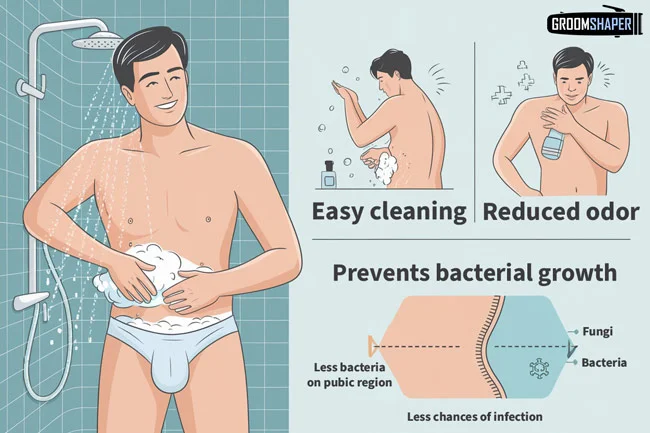
Pubic hair serves as a protective barrier, reducing friction during sexual activity and potentially preventing bacteria from entering the genital area, according to Medical News Today.
Trimming is considered safer, as it avoids cutting close to the skin, minimizing risks like ingrown hairs or infections. Shaving, however, can lead to complications.
A 2017 JAMA Dermatology study noted that 25% of groomers reported injuries, such as cuts, rashes, or infections, with razors being the primary culprit.
Frequent shaving is also linked to a higher risk of sexually transmitted infections (STIs) due to micro-abrasions, per a 2017 Sexually Transmitted Infections study.
Relationship status influences grooming habits.
The 2017 American Journal of Men’s Health study found that men in relationships or those sexually active groom more often, with 50% to 72% citing sexual preparation as a motivator. Single men or those not dating are less likely to groom regularly, though no specific percentages isolate this group.
Partner preferences also matter. A 2015 Healthline survey indicated that 20% of women prefer a partner with trimmed or no pubic hair, while a 2017 Cosmopolitan survey found 46% of men favor a bare partner, suggesting reciprocal expectations. Data on gay men’s preferences is scarcer, but anecdotal evidence from Body Image suggests they value grooming for aesthetic and sexual reasons.
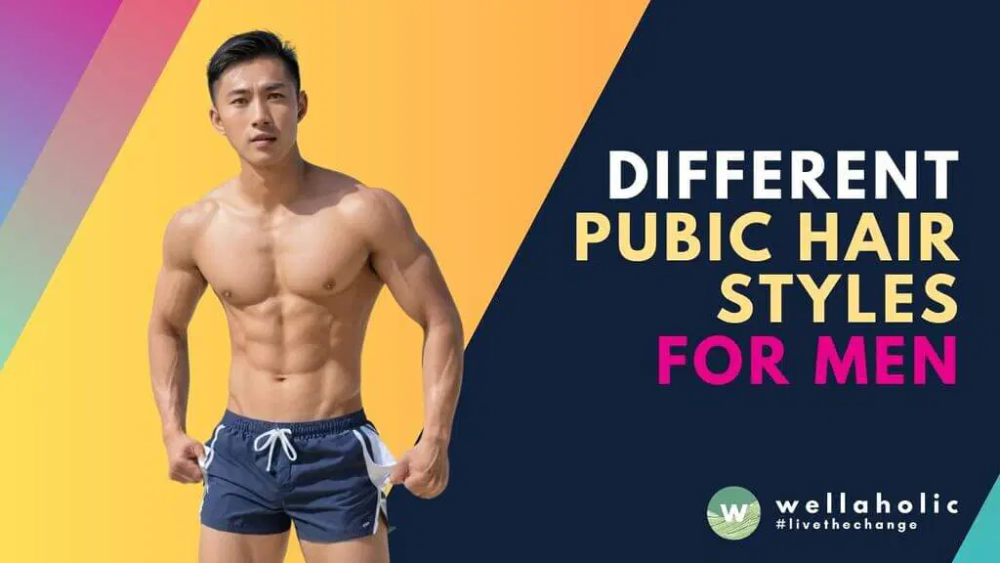
Pubic hair grooming remains sensitive and visual representation requires care.
Images of bushes or natural landscapes, as metaphors, are socially acceptable and avoid explicit content.
Such visuals align with neutral discussions, maintaining respect for diverse preferences without objectification. Panoramas of greenery can subtly nod to the topic while keeping the tone professional.
As grooming trends evolve, the conversation around male pubic hair in the U.S. reflects broader themes of body image, health, and personal choice.
Whether trimming for hygiene, shaving for aesthetics, or embracing a natural look, men navigate a landscape shaped by individual and societal factors. With ongoing research, the understanding of these practices will likely deepen, offering insights into health and cultural dynamics.
American Men’s Grooming: Pubic Hair Secret Practices Revealed (April 13, 2025)
#MaleGrooming #PubicHairTrends
#MensHealth #BodyImage #PersonalCare
Tags: male grooming, pubic hair, men’s health,
hygiene, body image, sexual health, U.S. trends
